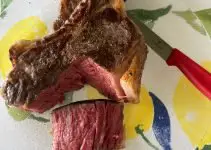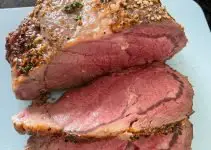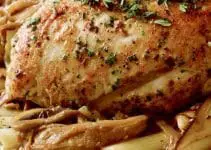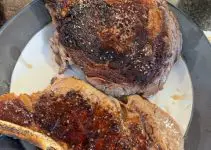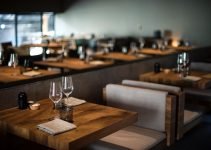Bain Marie is the French term for “hot water bath”, although direct translation is “Mary’s bath”. Mary was an alchemist who lived sometime between the 1st-3rd centuries AD. She is credited for inventing the first water bath apparatus, which was intended to mimic distillation.1 The technique is still used in chemistry, and eventually moved from the lab into the kitchen, just like the sous vide machine!
Water bath cooking is similar to double boiling, with the major difference being that a double boiler heats via steam from boiling water, while water bath cooking submerges the food in its cooking vessel, similar to sous vide cooking.
To prepare a Bain Marie, water is placed in a container and heated to a certain temperature. The food is placed in another container (usually glass or porcelain), then partially submerged in the hot water. The food is gently cooked, and can be kept warm in the water bath for a period of time. Conversely, an ice water or cold water bath can be used to keep cooked foods cold, out of the danger zone, and safe to eat.
Similarities and differences between Bain Marie and Sous Vide
- Bain Marie cooking is usually done in an oven, while sous vide cooking uses either an immersion circulator or a water bath machine.
- Food is submerged in vacuum sealed containers in sous vide cooking, while food cooked in a Bain Marie is not always sealed or even covered.
- Bain Marie cooking happens at much higher temperatures than sous vide cooking, usually up to just below boiling (212 degrees Fahrenheit). Sous vide cooking tends to hover around 130-150, depending on the food.
- Sous vide cooking tends to focus on perfectly cooked meats or other proteins, while the Bain Marie boasts perfectly cooked custards or other egg-based desserts.
- In Sous vide cooking, water is heated and then held at a certain temperature, meaning that the food does not continue to cook. Essentially, this gives you a window of time in which you can hold your food without overcooking (although texture can be compromised if held for too long). That means that a medium rare steak will not go past medium rare, and can hang out in the water for a while after it’s reached temperature. (Learn more about sous vide cooking and texture here). Additionally, the food in Sous Vide is cooked at a low enough temperature that it does not release water, leaving the food very tender and juicy.
- In Bain Marie cooking, the water temperature is unable to be controlled as closely, because the cyclical heat from the oven is what is heating the water. The higher temperature of the oven can also lead to water evaporation from not only the water bath, but the food itself, and can lead to overcooked food if its left in the oven for too long.
Best applications and helpful tips for Bain Marie sous vide cooking
Bain Marie cooking is best for delicate foods like custards; the water bath helps to create a more humid environment in the oven, protecting your food from drying out. Custards are usually prepared or served in a ramekin, a small porcelain baking dish.
- Use a large dish that is big enough for the ramekins or other baking dish, along with room for at least two inches of water; a casserole dish or roasting pan works great for this; a shallow baking sheet, not so much.
- Heat the water that is going to be used in the Bain Marie; a tea kettle, coffee pot, or just a pot of water on the stove will make this process easy.
- Fill your ramekins (or other heat-proof dish) with the custard or soufflé, or whatever else you are cooking. Gently place the ramekins in the larger pan BEFORE adding the water.
- If there is a lot of room in the baking dish, it might help to line the dish with a kitchen towel, to help prevent sliding or spilling during transfer.
- CAREFULLY add the water to the roasting pan, making sure that it doesn’t splash into the food; this is where the tea kettle or coffee pot can make life a lot easier. If you don’t have one of those, a glass liquid measuring cup could be used to transfer hot water into the pan.
- If you are worried about the transfer of the entire thing from the counter to the oven, a simple work around is this; place the roasting pan with the custards in the oven (pull out the rack so that you don’t burn yourself), then add the water; all that is left is to gently push the rack back into the oven.
- When removing the entire dish from the oven, if you are worried about splashing or burning, use tongs to remove the individual custards from the oven. Once they are all removed, use hot pads to remove the larger baking vessel. Or, you can simply leave it in the oven to cool.
Contributor:
This article was written by Stephanie Searor, MS RD LDN
Reference:

